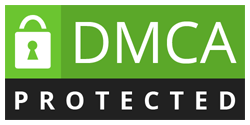Low cost rate - Simple Quick Loan
Low cost rate - Simple Quick Loan
The discount rate that is used in financial calculations is generally chosen
to be equal to the price of capital. The cost associated with capital, in a monetary
market equilibrium, will be just like the market rate of return about the
 financial asset mixture the actual firm uses to financial capital investment. Some
financial asset mixture the actual firm uses to financial capital investment. Some
adjustment might be made to the discount rate to consider account of risks
related to uncertain cash flows, along with other developments.
The discount rates typically applied to various kinds of companies show
significant variations:
- Start-ups seeking cash: 50–100%
- Early start-ups: 40–60%
-- Late start-ups: 30–50%
-- Mature companies: 10–25%
The larger discount rate for start-ups reflects the different disadvantages
they face, when compared with established companies:
- Reduced marketability associated with ownerships because stocks aren't traded
publicly
- Limited quantity of investors willing to commit
- High risks related to start-ups
- Overly positive forecasts by enthusiastic creators
One method that checks a correct discount rate may be the capital asset
pricing design. This model takes into consideration three variables that define
the discount rate:
1. Risk-free rate: The percentage of return generated by purchasing risk
free securities for example government bonds.
2. Beta: The measurement of what sort of company's stock price reacts to some change
in the marketplace. A beta higher than 1 implies that a change in reveal price is
exaggerated when compared to rest of shares within the same market. A beta much less
than 1 means how the share is stable and never very responsive to modifications in
the market. Under 0 means that a share is relocating the opposite
direction from all of those other shares in the exact same market.
3. Equity marketplace risk premium: The roi that investors
require above the danger free rate.
Discount price = (risk free rate) + beta * (equity marketplace risk premium)
People Came Here By Searching :
cheap international air tickets, flight tickets prices, domestic flights offers, flight tickets offers, cheap airline tickets, make my trip, spicejet, cleartrip
The discount rate that is used in financial calculations is generally chosen
to be equal to the price of capital. The cost associated with capital, in a monetary
market equilibrium, will be just like the market rate of return about the
 financial asset mixture the actual firm uses to financial capital investment. Some
financial asset mixture the actual firm uses to financial capital investment. Someadjustment might be made to the discount rate to consider account of risks
related to uncertain cash flows, along with other developments.
The discount rates typically applied to various kinds of companies show
significant variations:
- Start-ups seeking cash: 50–100%
- Early start-ups: 40–60%
-- Late start-ups: 30–50%
-- Mature companies: 10–25%
The larger discount rate for start-ups reflects the different disadvantages
they face, when compared with established companies:
- Reduced marketability associated with ownerships because stocks aren't traded
publicly
- Limited quantity of investors willing to commit
- High risks related to start-ups
- Overly positive forecasts by enthusiastic creators
One method that checks a correct discount rate may be the capital asset
pricing design. This model takes into consideration three variables that define
the discount rate:
1. Risk-free rate: The percentage of return generated by purchasing risk
free securities for example government bonds.
2. Beta: The measurement of what sort of company's stock price reacts to some change
in the marketplace. A beta higher than 1 implies that a change in reveal price is
exaggerated when compared to rest of shares within the same market. A beta much less
than 1 means how the share is stable and never very responsive to modifications in
the market. Under 0 means that a share is relocating the opposite
direction from all of those other shares in the exact same market.
3. Equity marketplace risk premium: The roi that investors
require above the danger free rate.
Discount price = (risk free rate) + beta * (equity marketplace risk premium)
People Came Here By Searching :
cheap international air tickets, flight tickets prices, domestic flights offers, flight tickets offers, cheap airline tickets, make my trip, spicejet, cleartrip






















No comments